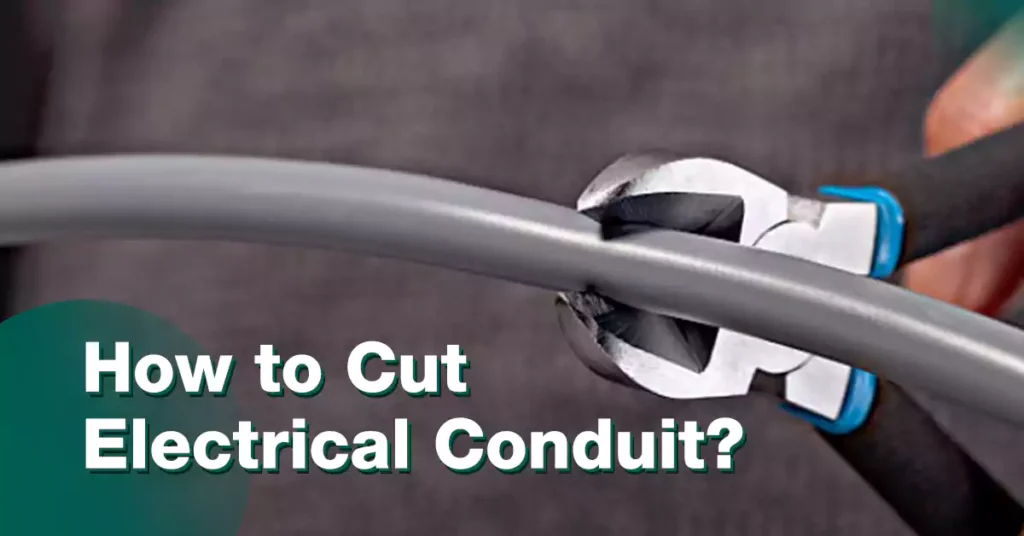
目录
During the installation of electrical conduits, we inevitably have to cut the electrical conduits because different installation locations require conduits of different lengths. However, in actual operation, some irregular operations may lead to safety hazards and even rework.
In this post, we will discuss in detail the features of different electrical conduits and how to cut conduits correctly. If you are an experienced electrician, you can also select the part you are interested in through the Table of Contents column at the top. So, let’s get started.
Electrical conduit refers to a system of pipes, tubes, or channels specifically designed to protect and organize electrical wiring in various applications. It serves as a protective housing that shields electrical wires from physical damage, moisture, chemicals, and other external factors that could compromise their integrity and pose safety hazards. By containing the wires within a secure enclosure, conduit ensures the longevity and reliability of electrical systems.
One of the primary functions of electrical conduit is to provide a designated pathway for electrical wires to travel from one location to another. This helps in organizing and managing the wiring system, making it easier to trace and maintain. By keeping the wires neatly arranged, conduit facilitates efficient troubleshooting and minimizes the risk of tangled or misplaced wires, which can lead to confusion and inefficiencies.
Electrical conduit comes in two major categories: PVC (Polyvinyl Chloride) conduit and metal conduit. Each of these categories has its own unique characteristics and applications.
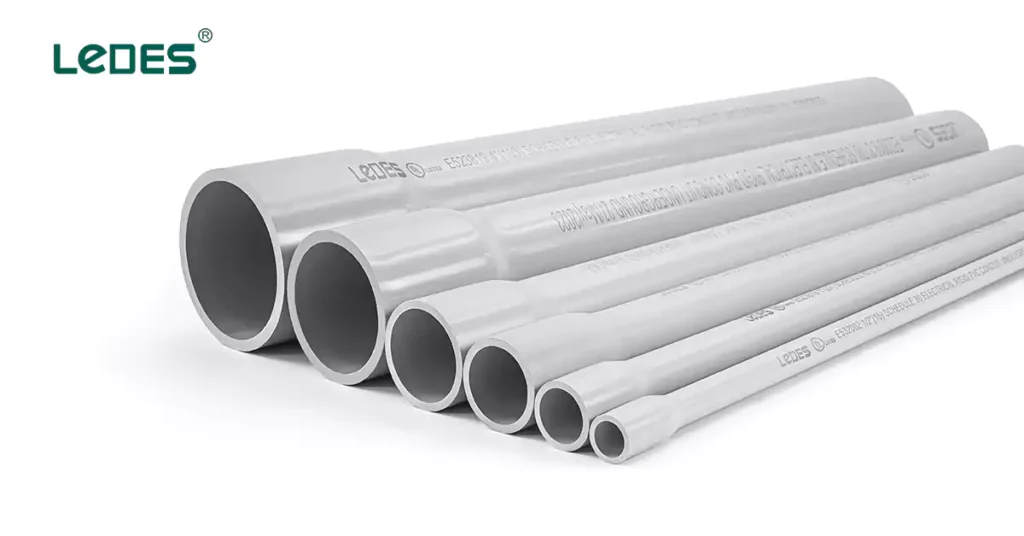
Rigid PVC conduit, is a common type of conduit made from durable polyvinyl chloride material. It is available in various sizes and shapes, including straight lengths, elbows, couplings, and fittings. PVC conduit offers the following advantages:
- 负担能力: PVC conduit is cost-effective, making it a popular choice for many electrical projects.
- 轻的: PVC conduit is lightweight compared to metal conduit, making it easier to handle and install.
- 耐腐蚀性: PVC conduit is highly resistant to corrosion, moisture, and most chemicals, ensuring long-term durability.
- Insulating Properties: PVC conduit provides electrical insulation, reducing the risk of electrical shocks and short circuits.
- Versatility: PVC conduit is available in different diameters and can be used for various applications, such as residential, commercial, and industrial wiring.
PVC conduit is commonly used in residential applications, such as wiring for outlets, switches, lighting fixtures, and low-voltage systems. Its ease of installation, affordability, and resistance to corrosion make it a suitable choice for various electrical projects.
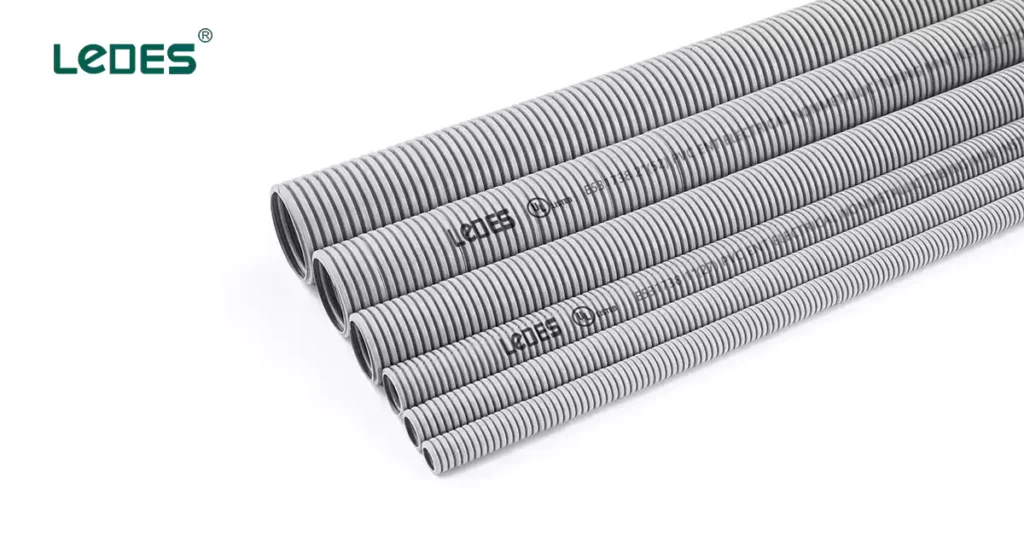
耳鼻喉, is a type of conduit that is more pliable and flexible compared to rigid PVC conduit. It is made from a corrugated, flexible, and flame-retardant PVC material. ENT conduit offers the following advantages:
- 灵活性: ENT conduit is highly flexible, allowing for easy installation around obstacles and tight spaces.
- 轻的: ENT conduit is lightweight, making it easy to handle and install.
- 耐腐蚀性: Like rigid PVC conduit, ENT conduit is resistant to corrosion, moisture, and most chemicals.
- Versatility: ENT conduit is suitable for various applications, including residential, commercial, and industrial wiring that requires flexibility and ease of installation.
ENT conduit is commonly used in residential and commercial applications where wiring needs to be routed through walls, ceilings, or floors. Its flexibility and easy installation make it an excellent choice for retrofitting or situations that require maneuverability.
Metal conduit is a pipe made of metal, used to protect the safety of cables and optical fibers. It is usually made of iron, aluminum, or steel. Compared with PVC conduit, it has higher mechanical strength and durability and is also a commonly used conduit type. There are several types of metal conduit commonly used in electrical installations.
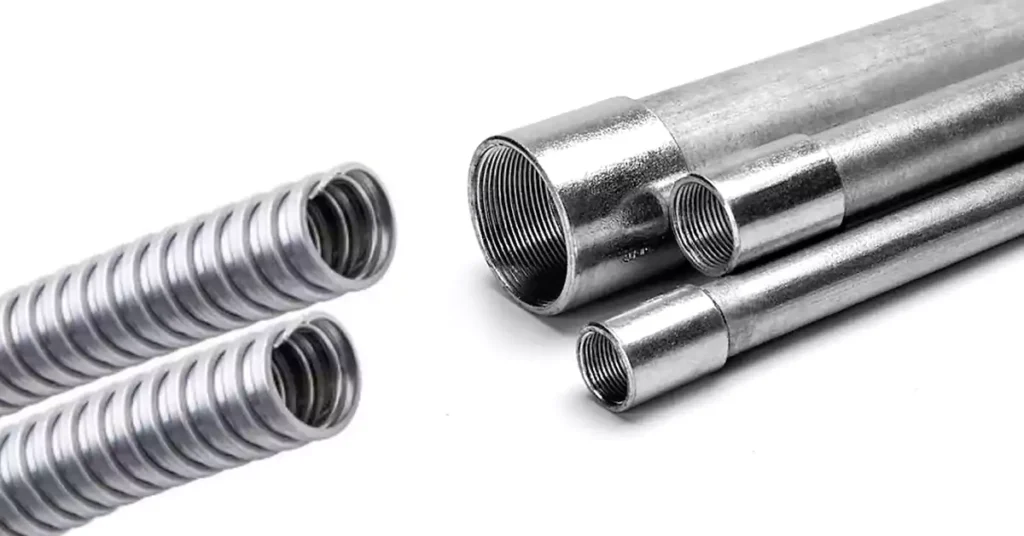
RMC is a heavy-duty metal conduit made from galvanized steel. It provides the highest level of mechanical protection and is suitable for demanding environments. RMC is rigid and requires special tools for bending and installation. It is commonly used in commercial and industrial applications where wiring is exposed to physical damage or extreme conditions.
EMT is a thinner and lighter metal conduit compared to RMC. It is made from galvanized steel or aluminum. EMT is flexible and easy to work with, allowing for easier bending and installation. It provides moderate mechanical protection and is commonly used in residential and commercial applications where wiring is concealed within walls, ceilings, or floors.
IMC is a medium-weight metal conduit that offers a balance between the rigidity of RMC and the flexibility of EMT. It is made from galvanized steel and provides enhanced mechanical protection compared to EMT. IMC is commonly used in commercial and industrial projects where wiring requires moderate to high levels of mechanical protection.
Electrical conduit shields wiring from physical damage, moisture, and environmental hazards, reducing the risk of electrical faults and shocks.
Conduit enables neat and organized wiring installations, making it easier to identify and access specific wires for maintenance or repairs.
Conduit systems allow for future modifications or expansions of electrical systems without major disruptions, accommodating changing needs.
Following electrical codes is crucial for safety and reliability, and conduit selection and sizing are essential for meeting code requirements.
Choosing the right conduit size and material is vital for the success of an electrical project. Here are some key considerations:
Choose conduit sizes that can accommodate the number and size of wires to prevent overcrowding and potential damage.
Consider factors like moisture, chemicals, temperature, and impact when selecting conduit materials that can withstand the specific conditions.
Conduit sizes should be suitable for the voltage and current requirements of the electrical system to ensure proper insulation and safety.
Anticipate future modifications by selecting conduit sizes that allow for additional wiring or spare capacity, minimizing the need for major changes later on.
To ensure a safe and successful cutting process when working with electrical conduit, it is important to use the right tools and follow proper safety precautions. Here are the necessary tools, and general safety tips:
A hacksaw with a fine-toothed blade is commonly used for cutting PVC conduit. It allows for precise cuts and is suitable for smaller projects or when a conduit cutter is not available.
A conduit cutter is a specialized tool designed specifically for cutting electrical conduit. It provides clean, straight cuts and is ideal for both PVC and metal conduit. Conduit cutters come in various sizes to accommodate different conduit diameters.
For larger projects or when cutting through metal conduit, a reciprocating saw with a metal-cutting blade can be used. It offers faster cutting speeds and is suitable for thicker or rigid metal conduit.
After cutting conduit, a deburring tool can be used to remove any sharp edges or burrs from the cut end. This helps prevent injuries and ensures a smooth connection when joining conduit sections.
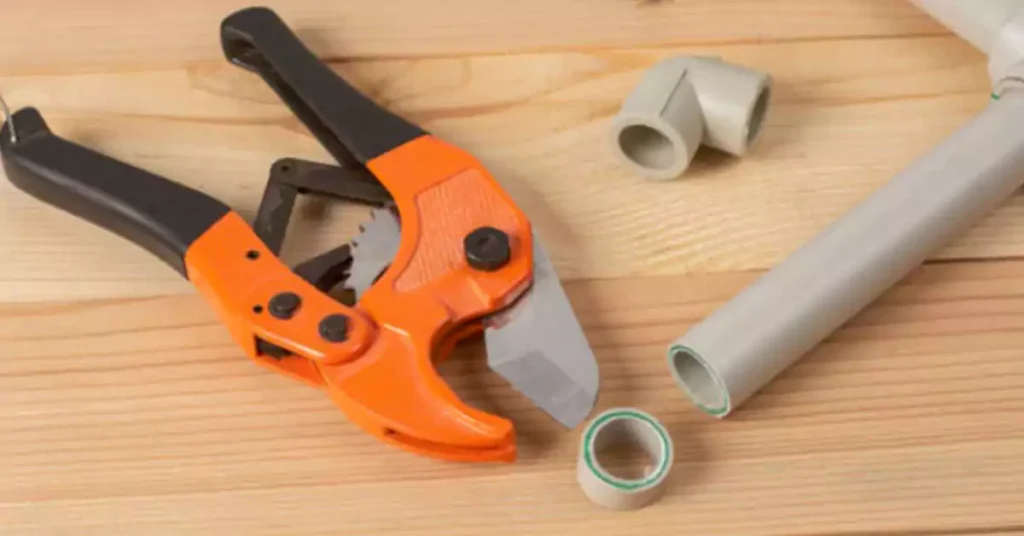
When cutting electrical conduit, it is crucial to prioritize personal safety by wearing the appropriate safety gear:
Protect your eyes from flying debris, metal or plastic shavings, and potential injuries caused by cutting or grinding.
Wear gloves to protect your hands from sharp edges, abrasions, or potential cuts during the cutting process.
When using power tools like reciprocating saws, which can generate loud noise, wearing ear protection such as earplugs or earmuffs is important to prevent hearing damage.
When cutting conduit, especially when using power tools, there may be dust or particles generated. Wearing a dust mask helps prevent inhalation of these particles and protects your respiratory system.
Work in a Well-Ventilated Area: When cutting conduit, especially metal conduit, it is advisable to work in a well-ventilated area to avoid inhaling dust or fumes. Good ventilation helps maintain air quality and reduces the risk of respiratory issues.
Power Supply: Before cutting or working on electrical conduit, ensure that the power supply to the area is turned off. This precaution prevents accidental electrical shocks and ensures your safety during the cutting process.
Secure the Conduit: Before cutting, make sure the conduit is securely held in place using clamps or a vise to prevent movement or slipping during the cutting process.
测量并标记: Take accurate measurements and mark the conduit where you intend to make the cut. This helps ensure precision and avoids unnecessary errors or wasted materials.
Take your Time: Cutting electrical conduit requires patience and attention to detail. Rushing the process can lead to mistakes, injuries, or poor-quality cuts. Take your time and work carefully.
To successfully cut electrical conduit, it is important to follow proper steps and techniques. Here are the steps for cutting both PVC conduit and metal conduit:
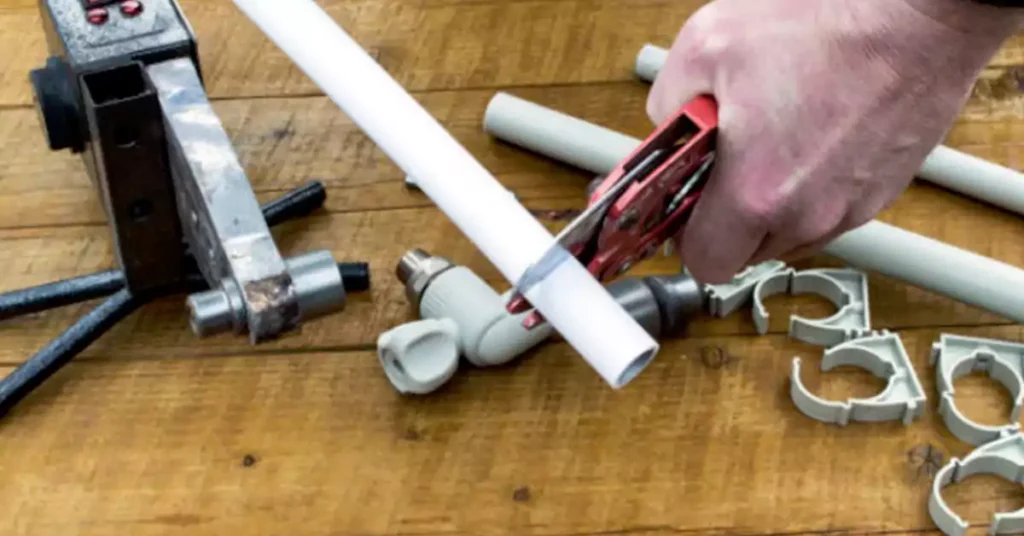
测量并标记: Use a tape measure to determine the desired length of the conduit. Mark the conduit at the measurement using a marker. Consider any necessary allowances for conduit bending, fittings, and expansion/contraction based on your specific project requirements.
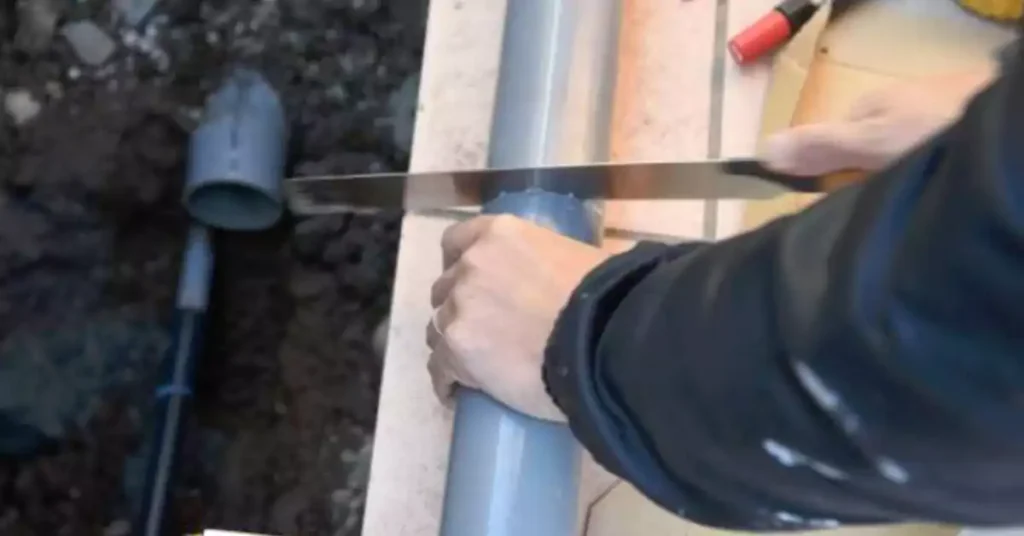
- Secure the Conduit: Place the PVC conduit in a vise or use clamps to secure it firmly in place, ensuring stability during cutting.
- Align the Cut Line: Align the marked cut line with the saw’s blade.
- Cut with a Hacksaw: Using a fine-toothed hacksaw blade, apply even pressure and begin cutting along the marked line. Use long, smooth strokes to maintain control and achieve a clean cut.
- Preventing Burrs or Rough Edges: After cutting, use a deburring tool or a utility knife to remove any burrs or rough edges from the cut end.
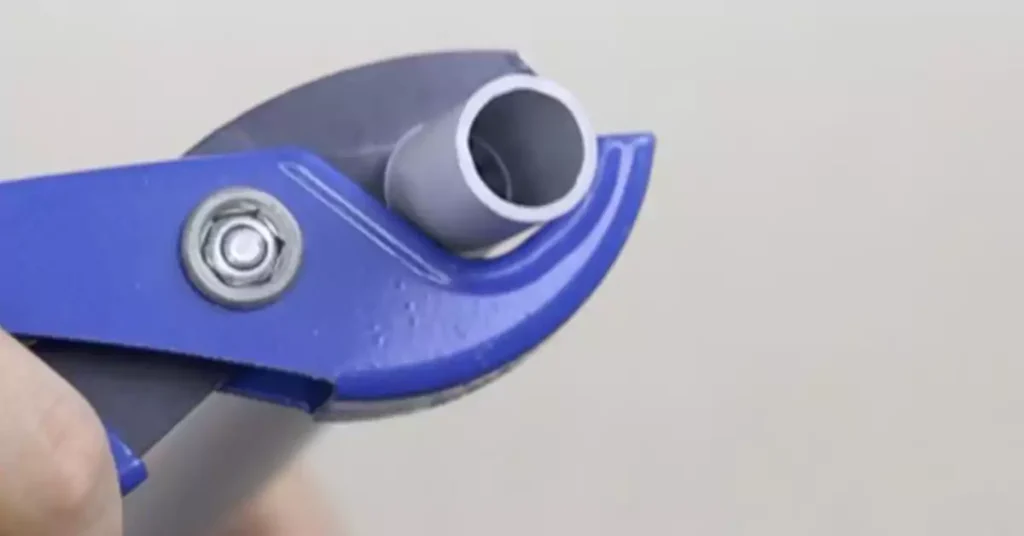
- Position the Cutter: Place the PVC pipe cutter around the conduit at the marked cut line.
- Apply Pressure: Squeeze the handles of the PVC pipe cutter firmly to apply pressure and gradually rotate the cutter around the conduit.
- Complete the Cut: Continue rotating and tightening the cutter until the cut is complete. PVC pipe cutters create clean, precise cuts without the need for additional deburring.
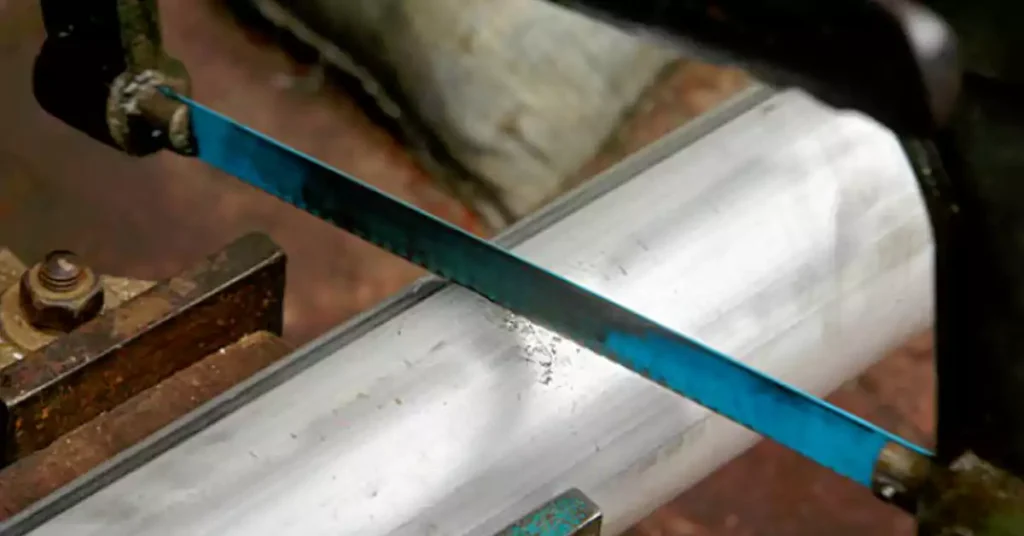
- Secure the Conduit: Similar to PVC conduit, secure the metal conduit using a vise or clamps to prevent movement during cutting.
- Align the Cut Line: Align the marked cut line with the saw’s blade.
- Cut with a Hacksaw or Reciprocating Saw: Using a hacksaw or reciprocating saw with a metal-cutting blade, apply steady pressure and begin cutting along the marked line. Use long, controlled strokes or reciprocating saw motion for efficient cutting.
- Preventing Burrs or Rough Edges: After cutting, use a deburring tool or a file to remove any burrs or rough edges from the cut end.
- Position the Cutter: Place the conduit cutter around the metal conduit at the marked cut line.
- Adjust and Apply Pressure: Adjust the conduit cutter’s blade to fit the conduit size and tighten it. Rotate the cutter around the conduit while applying pressure until the cut is complete.
- Blade Selection for Metal Conduit: When using a conduit cutter or a reciprocating saw, ensure the blade is suitable for cutting metal conduit to achieve clean, precise cuts.
By following these steps and using the appropriate tools and techniques, you can accurately and safely cut both PVC and metal electrical conduit. Remember to wear safety gear, secure the conduit properly, and take your time to ensure clean and precise cuts. Prioritize safety and consult professionals or relevant guidelines for specific project requirements.
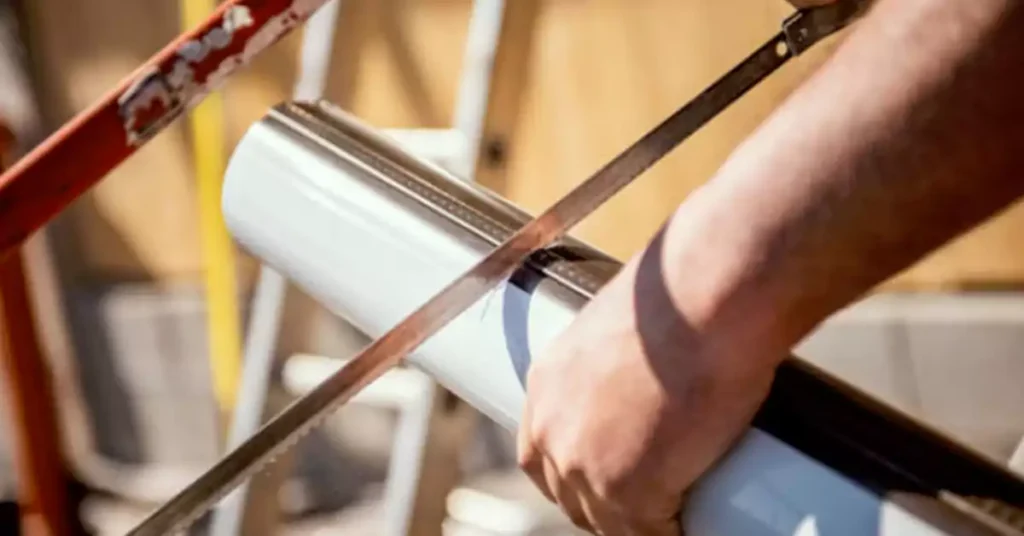
After cutting electrical conduit, it is important to conduct final checks and perform proper cleanup to ensure the accuracy of the cuts and maintain a safe working environment. Including:
Use a tape measure to double-check the length of the cut conduit against the desired measurement. Ensure it aligns with your project requirements.
Inspect the cut ends of the conduit for cleanliness and straightness. Verify that there are no rough edges, burrs, or irregularities that could hinder proper fittings or connections.
Gather any debris, such as PVC or metal shavings, accumulated during the cutting process. Use a brush, vacuum, or a damp cloth to collect and remove the debris from the work area.
Dispose of the collected debris and waste material responsibly according to local regulations. Separate PVC and metal waste appropriately for recycling if possible.
Wipe down the work area to remove any remaining dust, debris, or residue. This helps maintain a clean and safe environment for future work.
Cutting electrical conduit efficiently requires attention to detail and consideration of specific project requirements. Here are some additional tips and considerations to enhance your conduit cutting skills:
For repetitive cuts, consider creating cutting guides or jigs to ensure consistent and accurate measurements. These tools can help streamline the cutting process, especially when working on multiple conduit sections.
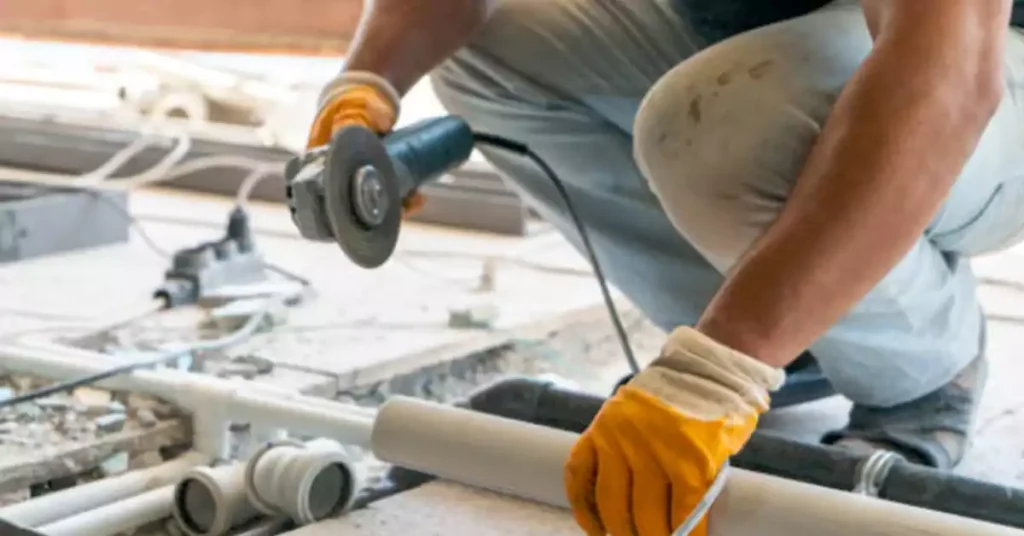
Plan Ahead: For complex conduit installations or unique scenarios, take the time to plan the layout and cutting requirements in advance. This helps minimize errors and ensures efficient utilization of conduit materials.
Consider Angled Cuts: In situations where conduits need to be joined at angles or require notches for fitting around obstacles, take extra care in measuring and marking to achieve precise angled cuts.
Seek Professional Advice: If you encounter intricate installations, unfamiliar configurations, or unique challenges, don’t hesitate to seek professional advice or consult an experienced electrician. Their expertise can provide valuable guidance to ensure successful outcomes.
In conclusion, accurate and precise conduit cutting is crucial for a successful electrical installation. Throughout this article, we have covered key points such as selecting the right tools, prioritizing safety, following proper steps, and considering additional tips for efficient cutting. It is important to conduct final inspections, clean up debris, and dispose of waste responsibly. By applying the knowledge gained and incorporating these practices, you can ensure clean cuts, secure fittings, and a safe work environment.
Accurate conduit cutting plays a significant role in the overall success of electrical installations. It enables proper connections, efficient use of materials, and reduces the risk of issues down the line. As you continue to enhance your conduit cutting skills, remember to share the knowledge and information with others in the field. By doing so, we collectively raise the standards and promote best practices in the electrical industry.
Any questions about electrical conduit, contact us or email us at any time.



